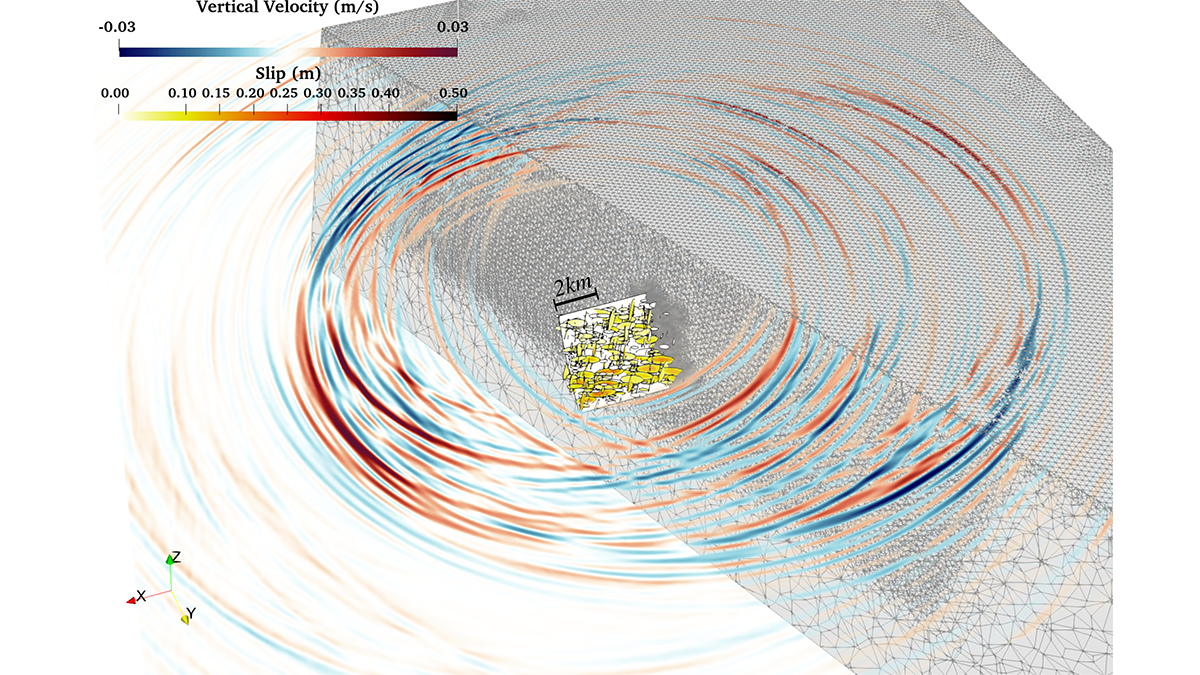Research Interests
My research interests include earthquake rupture dynamics, induced seismicity, deep learning in seismology, and earthquake source mechanics. I focus on developing numerical methods, physical models, and finding observational evidence to better understand earthquake processes as part of the Earthquake Mechanics Research Group.
Current Project
I am currently working on generative waveform modeling and earthquake dynamics modeling at ETH Zurich. I am focusing on generating seismogram using generative AI for better predict the stochastic waveform model. For the dynamic rupture model, I am investigating deca-scale earthquake rupture as part of Fault Earthquake Activation in Bedretto lab.
Publications
The publication lists below are only for the last two years. The rest of the lists can be found in this link.
Rupture dynamics and velocity structure effects on ground motion during the 2023 Türkiye earthquake doublet
Communications Earth & Environment, 6(1), p.228.
Geometrically Complex, Relatively Weak, and Subcritically Stressed Lembang Fault May Lead to a Magnitude 7.0 Earthquake.
Journal of Engineering and Technological Sciences, 57(1), pp.129-144.
Ground Motion Characteristics of Cascading Earthquakes in a Multiscale Fracture Network
arXiv preprint arXiv:2412.15416.
High Resolution Seismic Waveform Generation using Denoising Diffusion
arXiv preprint arXiv:2410.19343.
The western extension of the Balantak Fault revealed by the 2021 earthquake cascade in the central arm of Sulawesi, Indonesia
Geoscience Letters, 11(1), p.35.
Fault size–dependent fracture energy explains multiscale seismicity and cascading earthquakes
Science, 385(6707), p.eadj9587.
Seismic source analysis of the destructive earthquake November 21, 2022, Mw 5.6 Cianjur (Indonesia) from relocated aftershock
Scientific Reports, 14(1), p.12142.
Rupture dynamics of cascading earthquakes in a multiscale fracture network
Journal of Geophysical Research: Solid Earth, 129(3), e2023JB027578
Research Projects
High-Resolution Spatial Stress Ratio and Principal Stress Orientation in Java Region
We aim to determine stress ratios and the orientation of principal stress across the Java region. We will use open-source data from several national and international agencies that provide earthquake source mechanisms, as well as several published studies. We plan to re-evaluate several poorly constrained analyses of the earthquake source mechanisms using stochastic Bayesian moment tensor inversion. We will also use the well-established open-source software, Stress Inverse, to obtain the stress ratio and orientation of principal stress. Due to the large dataset and the region of Java, we will distribute our efforts evenly among all collaborators. The final outputs of the research will be an online platform featuring an interactive map of stress ratios and principal stress orientations. The map will be implemented on a webpage that can be accessed by the general public. Moreover, the map will contain a database that can be submitted to by any approved users.
